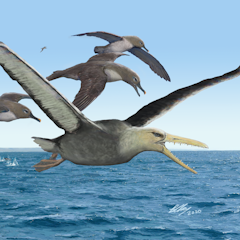
Articles on Ducks
Displaying all articles

Victoria’s decision this week to reject a ban on duck hunting is a shot to the heart for proud Yuin man Jack Pascoe, son of Bruce Pascoe. The black duck Yumburra is a Yuin tribal totem.

Our airspace has only started to become cluttered recently – many birds are struggling to navigate through it.

Parents provide the energy needed for their young to grow large brains. Climate change may negatively affect birds’ brain development as it impacts food supplies.

A biologist who studies how viruses spread from animals to people explains the process of spillover and the risks posed by the new bird flu that has spread across the globe.

Hunters are warned to take precautions handling wild birds, and the virus can spill over to non-avian species, so no one should approach wild animals that appear ill.

The common eider nests in colonies on islands of the St. Lawrence estuary. The down that the female duck takes to fill her nest has exceptional insulating properties.

Bird flu is highly contagious in domestic flocks, and a major outbreak is underway in the US. A veterinary scientist explains what consumers need to know.

We can learn about the spread of diseases through populations by studying naturally occurring instances of herd immunity. Avian cholera in the Canadian Arctic provides a useful case study.

Your local ducks (and other wild birds) will thank you.

Paleontologists have discovered fossil remains belonging to an enormous ‘toothed’ bird that lived for a period of about 60 million years after dinosaurs.

The COVID-19 pandemic is interrupting scientific field work across North America, leaving blank spots in important data sets and making it harder to track ecological change.

On one of the world’s most remote islands, a species of duck has learned to scavenge on dead seals.

Much of the money for wildlife conservation in the United States comes from taxes and fees paid by sportsmen. But as fewer Americans take up hunting, wildlife managers need other funding sources.

Studies of animal-human interactions in various settings could perhaps help prevent bird flu and the mass slaughter of animals it inevitably leads to.

Bird feathers can tell us a lot about their owners and the places they visit.

Just before dawn on the third Saturday in March, the first shots will be fired, and the 2013 Victorian duck hunting session will commence. But 2013 will be unlike previous years. You are probably unaware…
